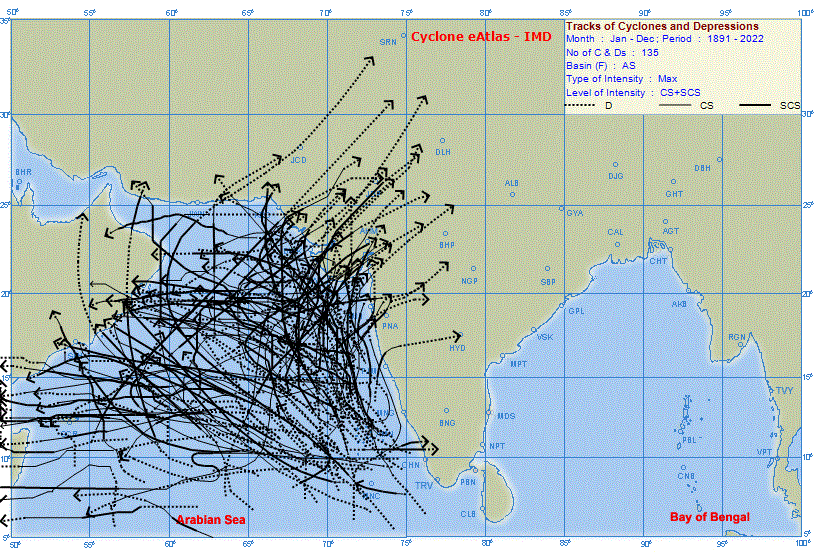Landfall
The Bay of Bengal TCs more often strike Odisha-West Bengal coast in October, Andhra coast in November and the Tamilnadu coast in December. Over 60 percent of the TCs in the Bay of Bengal strike different parts of the east coast of India, 30 percent strike coasts of Bangladesh and Myanmar and about 13 percent dissipate over the sea itself.
The cyclones crossing different coastal states are shown in Fig.1. Considering Arabian Sea, a significant number of cyclones dissipate over the sea itself before making any landfall (about 48.5%). Gujarat coast is the most prone for the cyclones developing over the Arabian Sea, with about 23% of total cyclones developing over Arabian Sea cross Gujarat coast and 11% each cross Pakistan and Oman coasts.

Fig.1(a) Frequency of cyclone/ severe cyclone over the Bay of Bengal landfalling over different coastal states during 1891-2022.

Fig.1(b). Frequency of cyclone/severe cyclone over the Arabian Sea landfalling over different coastal states during 1891-2022
The CDs mostly dissipate when they move over the land. Also, when a CD over the sea comes across the unfavourable conditions like colder SST and high vertical wind shear, it dissipates over the sea itself. The frequency of dissipation is significantly higher over the West Arabian Sea, mainly due to colder SST. There are also significant numbers of cases of dissipation along the east cost of India, Bangladesh and Myanmar coasts.
The climatology of cyclonic disturbances presented here is based on data available in e-Atlas published by IMD. The limitation and scope of this Atlas have been discussed also by IMD (2008). One of the important limitations is that it does not include the short lived disturbances (life period < 12 hours).
Further, the climatology depends on the monitoring capability to detect the disturbances. The monitoring system over the region has undergone several changes with augmentation of surface observatories, introduction of RS/RW observations during 1930’s, use of satellite since 1960s and implementation of meteorological buoys since 1997. Hence all these facts should be taken into consideration while analyzing the climatological characteristics of cyclonic disturbances over the NIO.